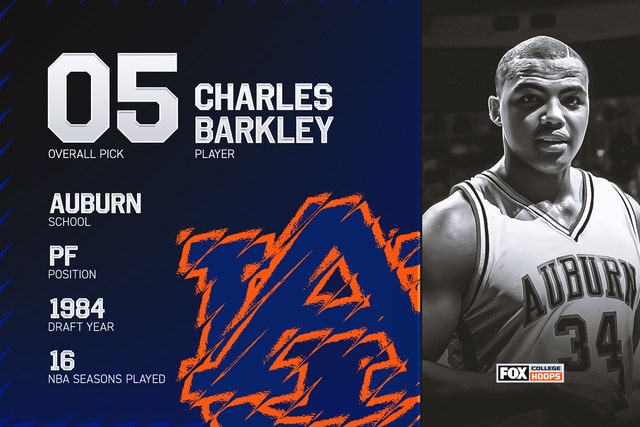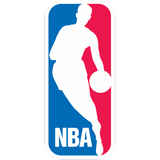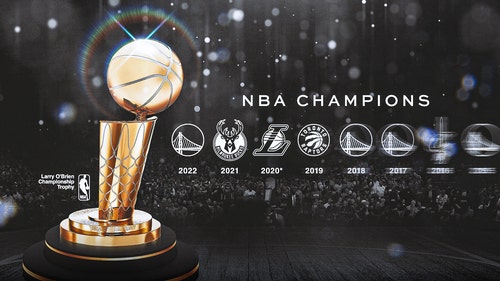
NBA Draft: Best college basketball player selected at every slot
By Andy Katz
FOX Sports College Basketball Analyst
As the next class of rookies take center stage Thursday night in the much-anticipated 2022 NBA Draft, we’re taking a step back and digging deep into the history books.
Who are the greatest college basketball players of all time, and where were they selected in the draft?
While NBA legends such as Kareem Abdul-Jabbar (formerly Lew Alcindor) and Bill Russell were selected at the top of the first round, other NBA stars like Draymond Green and Jalen Brunson had to wait it out before eventually hearing their names called on draft night.
Sit back and buckle up as we list the best college basketball superstars selected at every slot, 1-60, in NBA history.
Keep in mind that this is not an exact science. It is simply our takes and opinions.
Let the fun begin.

The superlatives are endless. Alcindor, as he was known at UCLA prior to changing his name to Kareem Abdul-Jabbar in 1971, played only three seasons because freshmen weren’t eligible to play college basketball. His NCAA Tournament record was 12-0. He went 88-2 in those three seasons with UCLA, averaging 26.4 points and 15.5 rebounds while shooting over 63% from the field. He won his first 44 games before losing by two to Houston. Alcindor won a national title in each of his three seasons. Three seasons, three titles! He was the most dominant center of his era. Case closed.

Russell dominated the sport and his position in the early 1950s. He had a 9-0 NCAA Tournament record, averaged 20.7 points and 20.3 rebounds a game while shooting 51.6%. Think about that. … He averaged 20 and 20! San Francisco went 71-8 in his three seasons with the Dons and won two national championships. Russell’s defense was unmatched, and his intimidation and presence in the post made him a transcendent player.

Jordan played three seasons for Dean Smith and the Tar Heels before leaving for the NBA. He was 8-2 in the NCAA Tournament, winning the national championship in 1982 as a freshman when he hit the game-winning shot to beat Georgetown. He ended his career averaging 17.7 points, five boards and shooting 54%. His best statistical year was his sophomore season when he averaged 20 points per game. He wasn’t as dominant a player in college as he was with the Bulls in the NBA. But he was becoming something special with each passing game.

Jackson was a two-time Big Ten Player of the Year and a UPI Player of the Year. He had dominant seasons in 1991 and ’92 playing for the Buckeyes. Jackson averaged 19.2 points and shot over 50% in his three seasons with the Buckeyes. He was a two-time consensus All-American. The Buckeyes played in the NCAA Tournament in each of his three seasons. He was a strong presence, playing the big guard well and becoming a difficult matchup in every game.

Barkley didn’t have the postseason success in college that he had in the NBA, but he was just as much of a mismatch for opposing teams. Barkley was incredibly difficult to deal with in his three seasons with the Tigers (1981-84), averaging 14.1 points and 9.6 rebounds while shooting over 62%. Barkley became a rebounding force in college and only enhanced it as he became an all-time great in the NBA.

Considered one of the greatest basketball players of all time, Bird starred at Indiana State from 1976-79. The Sycamores had never made an NCAA Tournament appearance before he arrived in ’76. During his three-year run, the team went 81-13 and appeared in the school’s first NCAA national championship game. He finished his collegiate career averaging 30.3 points and 13.3 rebounds per game. He was a two-time MVC Player of the Year, a two-time consensus All-American and the National Player of the Year in 1979.

When talking about the greatest scorers in college basketball history, Simmons must be included in the discussion. A three-time MAAC Player of the Year, Simmons was an unstoppable force in college. He finished his career with 3,217 points, which currently ranks fourth all-time behind Pete Maravich, Freeman Williams and Chris Clemons. In 1990, Simmons became the first player in NCAA history to score more than 3,000 points and grab more than 1,100 rebounds. That year, Simmons was named a consensus first-team All-American and was named the Naismith College Player of the Year.

The early-to-mid 2000s featured an abundance of elite point guards across college basketball. But you’d be hard-pressed to find any player who put together as good a two-year stretch as Ford. When Ford arrived in Austin in 2001, not only did he help guide the Longhorns to a 22-win season and a spot in the Sweet 16, but he also became the first freshman in NCAA history to lead the country in assists. The following season, Ford ranked third in the nation in assists while leading Texas to its first Final Four appearance in 55 years. He was named a consensus first-team All-American and won both the Naismith College Player of the Year and Wooden Award.

Walker enjoyed a standout three-year career at UConn (2008-11), but his junior year is considered by many to be one of the greatest individual seasons in college basketball history. That season, Walker averaged 23.5 points, 5.4 rebounds and 4.5 assists per game while leading the Huskies on an unforgettable run to the NCAA title. He also led UConn to the Big East Tournament title by winning five games in five days, scoring a tournament-record 130 points along the way. He would be named first-team All-Big East and first-team All-American, and was the recipient of the Bob Cousy Award, which goes to the top point guard in the country.

One of the top scorers in college basketball history, Fredette enjoyed an incredible four-year career at BYU (2007-11). After averaging 28.9 points per game during his senior campaign, Fredette left BYU holding almost every school and Mountain West Conference scoring record, including most points scored in a game (52) and season (1,068). He was named the MWC Player of the Year and the consensus National Player of the Year in 2011.

Redick was a tremendous college player for Mike Krzyzewski. He was the Wooden and Naismith Award winner, a two-time ACC player of the Year and two-time ACC Tournament MVP. Redick defined Duke basketball during his four-year run (2002-2006). He was a career 40% 3-point shooter and had a thrilling senior season in 2006, averaging 26.8 points per game while battling Gonzaga’s Adam Morrison for the scoring title (Morrison averaged 28.1). Redick was beloved at Cameron Indoor Stadium and polarizing on the road. But he lapped it all up and embraced his role as the go-to scorer for the Blue Devils.

Dr. J played just three seasons at UMass and only 15 games in his first season. But he shined in his next two, averaging 19 and 20 a game, respectively. He left for the pros in 1971, playing in the ABA before moving over to the NBA in 1976. He didn’t have the same hype playing at UMass, but ultimately, he should be looked back on as a steal at 12. He would go down as one of the greatest players of his generation and a transformational talent. He remains the greatest player to play for the Minutemen.

Hansbrough goes down as one of the most productive college players of all time. He was a consensus National Player of the Year, an ACC Player of the Year and a four-time All-ACC player. He won a national championship in 2009 amid a dominant run by the Tar Heels. He averaged 20 and 12 for Roy Williams and was a force in the ACC, playing a physical style. He constantly sacrificed his body to produce for the Tar Heels and relished playing in the Duke-Carolina rivalry games.

Drexler was the 1983 Southwest Conference Player of the Year, and a member of Phi Slamma Jamma and the 1983 team that ultimately lost to NC State in the NCAA title game. He played three seasons for the Cougars, averaging 14 points and nine rebounds. His athleticism, ability to get to the basket and overall smooth gliding nature on the court translated immediately to the NBA with the Portland Trail Blazers.

Nash was a steal for Phoenix at No. 15. He was a two-time WCC Player of the Year and engineered one of the greatest NCAA Tournament upsets when his Broncos took down No. 2 Arizona during his freshman year in 1993. The Broncos would play in the NCAA Tournament in each of his three seasons. Nash had Santa Clara as a legit NCAA team in the years before Gonzaga became a household name. He stepped into the spotlight in between the Loyola-Marymount and Gonzaga runs out of the WCC by taking control of his position. He averaged 14.9 points and 4.5 assists a game, shooting over 86.7% from the free-throw line. He was a 53% shooter overall and 40% on 3s.

One of the smoothest shooting guards in SEC history, Delk was a focal point of Kentucky’s memorable 1996 national championship squad. As good as Delk’s stats were throughout his four-year career in Lexington, it was his winning ability that stood out above the rest. Kentucky was 119-18 during Delk’s four seasons. That included two SEC regular-season titles, three SEC Tournament titles, two Final Fours and the national title. During the Wildcats’ magical run in ’96, Delk was a consensus first-team All-American, the SEC Player of the Year and the most outstanding player of the Final Four. He still holds the Kentucky program record for career 3-point field goals (283) and 3-point field goal percentage (.397).

You’d be hard-pressed to find a more dominant shooting guard in the early 2000s than Dixon. The former ACC Player of the Year enjoyed a standout career at Maryland, averaging 16.1 points per game over his four years, including a 20.4 clip during his senior season. While Dixon’s resume is filled with individual accolades, including being named a three-time first-team All-ACC player, a consensus All-American and the Final Four Most Outstanding Player, it was his ability to win that stood out above the rest. During his senior season, Dixon led the Terps to a 32-4 record and the school’s first-ever national championship. Dixon left Maryland as the school’s all-time leading scorer, as well as Maryland’s all-time leader in 3-pointers made (239). He is the only player in NCAA history to accumulate 2000 points, 300 steals and 200 3-pointers made.

If Murphy had stayed four years in college, there is a good chance he would stand atop the list of college basketball’s all-time leading scorers. … Yes, he was that good. Standing at only 5-foot-9, 165 pounds, Murphy was an unstoppable force for the Purple Eagles in the late 60s. He scored 2,548 points in 77 games, an average of 33.1 points per contest. Murphy was a three-time All-American and helped lead Niagara to the school’s first NCAA Tournament appearance in 1970.

When people think of Syracuse basketball in the early-to-mid 2000s, the name that often comes to mind first is Carmelo Anthony. But it was Warrick who left the school as one of the most accomplished players in program history. In addition to playing a major role in Syracuse’s run to the 2003 national championship, Warrick ranked in the top five in program history in both scoring and rebounding. He was two-time first-team All-Big East, a second-team All-American as a junior and a first-team All-American as a senior. Warrick was named the Big East Player of the Year in 2005 and Big East Tournament MVP en route to leading the Orange to a conference title that season.

There is a legitimate argument to be made for Nelson being the top player in college basketball during the 2000s. The former St. Joe's standout was dominant on both ends of the court. He was a three-time first-team All-Atlantic 10 performer, a consensus All-American and the Atlantic 10 Player of the Year. As a senior, Nelson won the 2004 Wooden Award, Naismith Award and the Bob Cousy Award while leading the Hawks to a 27-0 regular-season record and a No. 1 seed in the NCAA Tournament. He finished his career as Saint Joseph’s all-time leader in points, assists and steals.

Finley was a two-time All-Big Ten selection. But there is a reason his number was retired by the Badgers this past season. He was a workaholic while playing for Wisconsin from 1991-95. He helped usher in a new era for the program after decades of mediocrity. Finley was one of the first big-time talents to come through Wisconsin after its tenure in obscurity. He averaged 18.7 points and 5.6 boards during his four-year run in Madison. He ended up playing 16 years in the NBA — showing incredible value for a No. 21 pick.

Lewis will go down as the greatest player ever to play for the Huskies. He played for Jim Calhoun for three of his first four seasons. He ended his career as a three-time ECAC Player of the Year and averaged 22.2 points a game while being incredibly difficult to stop. The Boston Celtics got an All-Star and a person whom the community loved. He tragically died in 1993 from sudden heart failure, a year after being named an NBA All-Star.

English was a proficient scorer at South Carolina from 1972-76. He averaged 17.8 a game for his career, including 22.6 as a senior. He shot at a high clip of 53.8% from the field. His silky-smooth touch was difficult to defend in college. Little did anyone know that he would go on to the Denver Nuggets and become the NBA's top scorer in the 1980s. He was drafted by Milwaukee in the second round at No. 23 in 1976. His best years were with the Nuggets from 1979-89. He’s so beloved at South Carolina that he was selected to the board of trustees.

Lowry played only two seasons for Jay Wright and the Wildcats, but he was a presence at point guard from 2004-06. He didn’t wow with his stats, but his game control, leadership and management as a playmaker made him a coveted NBA player. He won an NBA title with Toronto in 2019 and became one of the top assets in the league last year upon being acquired by Miami. He has maximized his NBA career as a late-first-round selection.

Price was an ACC Rookie of the Year, consensus All-American and four-time All-ACC player, and this was during the dawning of the ACC glory years from 1982-86. He played for Bobby Cremins and was a shot-maker, never hesitating to take and make jumpers from the perimeter. He had grit and didn’t shy away from the big moments. He was a second-round pick at No. 25 in 1986, taken by Cleveland. He would go on to be a critical piece of the Cavaliers’ late-'80s playoff runs.

The state of Indiana is known for its college basketball, and Alford was one of the greatest to ever play at IU. Alford led the Hoosiers to the 1987 national championship and finished his career as the school’s all-time leading scorer. He was a three-time first-team All-Big Ten performer, a two-time consensus first-team All-American and the 1987 Big Ten Player of the Year. Alford finished his four-year career at Indiana with an incredible record of 92-35, which included a Big Ten title, two trips to the Elite Eight and an NCAA title.

One of the most shocking stats in college basketball today is that the Big Ten Conference has not won a national championship in 22 years. However, don’t let that stat fool you on just how good the Purdue Boilermakers were in the mid-to-late 2000s. One of the driving forces behind the Boilermakers’ incredible stretch was Johnson. The former Big Ten Player of the Year starred for Purdue from 2007-11 and left as the program’s co-record holder for the most wins in a career with 107. He was a two-time first-team All-Big Ten selection, the 2011 Big Ten Defensive Player of the Year and a consensus first-team All-American. Johnson ranks in the top 10 in program history in scoring, rebounds and blocks.

Known as one of the top players in Maryland basketball history, Vasquez enjoyed a standout collegiate career from 2006-10. The 2010 ACC Player of the Year averaged more than 17 points, five assists and four rebounds in three of his four seasons at Maryland en route to becoming the only player in ACC history to compile at least 2,000 points, 700 assists and 600 rebounds. As a senior, Vasquez was named first-team All-ACC, a consensus second-team All-American and the recipient of the Bob Cousy Award.

Wisconsin has a rich college basketball history, and the best scorer to ever wear a Badgers uniform was Tucker. The former All-American starred for Wisconsin from 2002-07, when he scored an eye-popping 2,217 points. During his senior season, Tucker led the Badgers to an impressive 30-6 record en route to being named the Big Ten Player of the Year.

When looking at his résumé from top to bottom, you’d be hard-pressed to find a more accomplished four-year college basketball player over the past decade than Hart. The former Villanova standout finished his college career with a record of 129-17, which included four Big East regular-season titles, two Big East Tournament titles and the 2016 national championship. His career accolades include being a two-time Big East Tournament MVP, a two-time All-Big East member, the 2017 Big East Player of the Year, a third-team All-American in 2016 and a consensus first-team All-American in 2017.








































